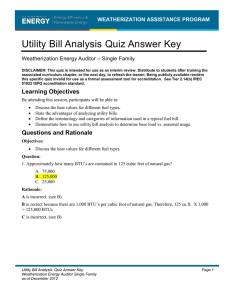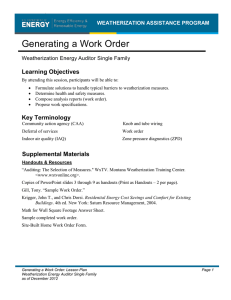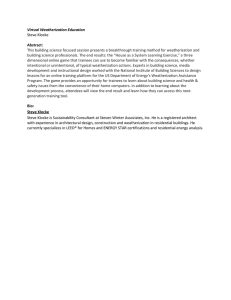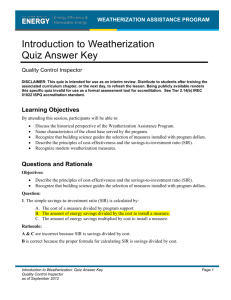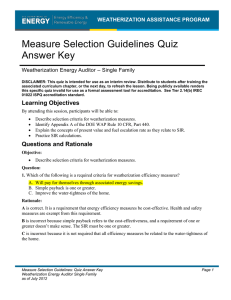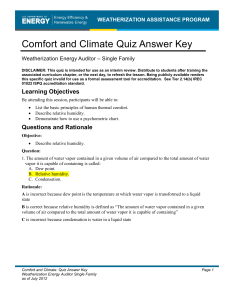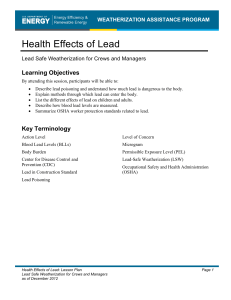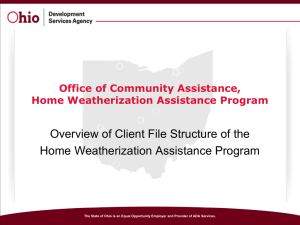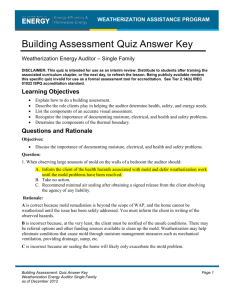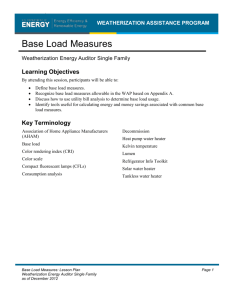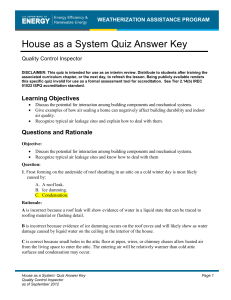Weatherization Energy Auditor – Single Family
advertisement
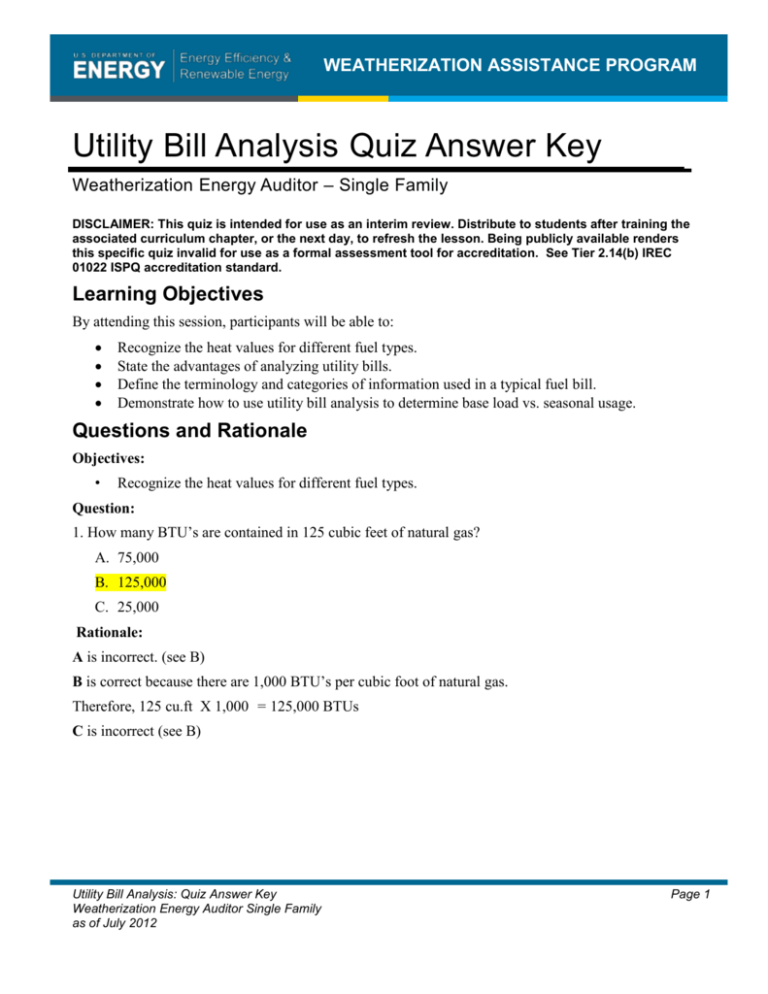
WEATHERIZATION ASSISTANCE PROGRAM Utility Bill Analysis Quiz Answer Key Weatherization Energy Auditor – Single Family DISCLAIMER: This quiz is intended for use as an interim review. Distribute to students after training the associated curriculum chapter, or the next day, to refresh the lesson. Being publicly available renders this specific quiz invalid for use as a formal assessment tool for accreditation. See Tier 2.14(b) IREC 01022 ISPQ accreditation standard. Learning Objectives By attending this session, participants will be able to: Recognize the heat values for different fuel types. State the advantages of analyzing utility bills. Define the terminology and categories of information used in a typical fuel bill. Demonstrate how to use utility bill analysis to determine base load vs. seasonal usage. Questions and Rationale Objectives: • Recognize the heat values for different fuel types. Question: 1. How many BTU’s are contained in 125 cubic feet of natural gas? A. 75,000 B. 125,000 C. 25,000 Rationale: A is incorrect. (see B) B is correct because there are 1,000 BTU’s per cubic foot of natural gas. Therefore, 125 cu.ft X 1,000 = 125,000 BTUs C is incorrect (see B) Utility Bill Analysis: Quiz Answer Key Weatherization Energy Auditor Single Family as of July 2012 Page 1 WEATHERIZATION ASSISTANCE PROGRAM Objectives: State the advantages of analyzing utility bills. Question: 2. There are numerous advantages to analyzing utility bills. From the list below check all that apply: a. Target weatherization to those homes with high energy use. b. Determine which weatherization measures would be most cost effective. c. Assist clients to interpret their energy-use patterns. d. Determine normalized energy use before and after weatherization. Rationale: All are correct; answers are self explanatory Objectives: Define the terminology and categories of information used in a typical fuel bill. Question: 3. An electrical bill will contain the following kinds of information except: A. Distribution charge. B. Monthly Kwh consumption. C. Therms. Rationale: A & B are incorrect because those items do appear on electric bills. C is correct because therms is a unit measurement used to express gas consumption. Objectives: Demonstrate how to use utility bill analysis to determine base load vs. seasonal usage. Question: 4. An estimate of seasonal base load use is determined by: A. Averaging the three highest months of use. B. Totaling the three lowest months of use. C. Averaging the three lowest months of use. Page 2 Utility Bill Analysis: Quiz Answer Key Weatherization Energy Auditor Single Family as of July 2012 WEATHERIZATION ASSISTANCE PROGRAM Rationale: A is incorrect because the highest three months of use would be more representative of seasonal heating or cooling use. B is incorrect because total use would result in an erroneous estimate. It must be averaged over three lowest months to get a realistic estimate as in C. C is correct. Utility Bill Analysis: Quiz Answer Key Weatherization Energy Auditor Single Family as of July 2012 Page 3
